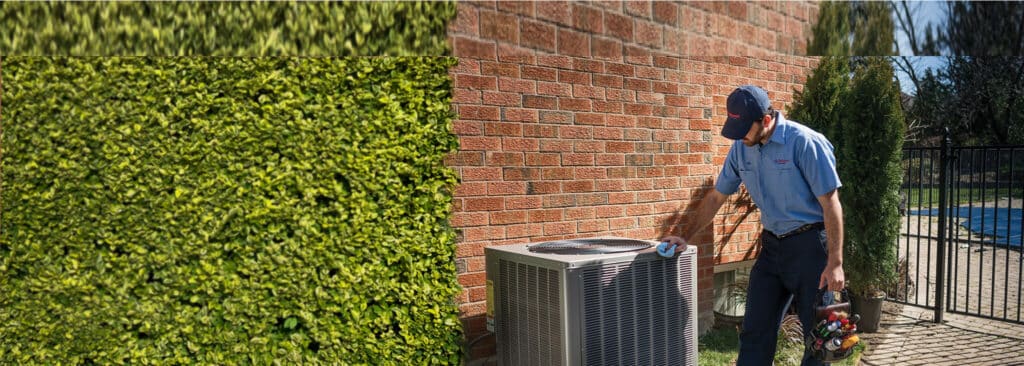
Registers
In order for a furnace & air conditioner to work properly, it needs to breathe – and understanding your home’s airflow is an important first step.
A common problem occurs when registers get covered by carpets, furniture or other items, with the airflow now being either restricted or stopped altogether.
Registers need to be kept open, clean and with no obstructions in the way to help your furnace do its job efficiently and to help maintain consistent temperatures throughout your home.
If not, your furnace may have to work harder than it needs to – which can potentially lead to more energy consumption, higher utility bills and a higher risk of potential repairs.
If you notice low airflow coming out of the register, this could be a sign of a dirty or clogged furnace filter.
There are different types of filters, depending on your furnace model, and they can be easily checked and replaced on a regular basis.
It’s a good idea to check at least every three months – with more frequent inspections if you typically find a lot of dust in your home or if you have pets.
Pro Tip
There is also a misconception that by closing registers in certain rooms, and especially in the basement, you’ll be able to route more of the conditioned air you need to other areas of your home. Unfortunately, this disrupts the air pressure balance and your furnace will have to work harder to offset the effect. Better to keep all of them open, all the time.
Thermostats
A programmable thermostat allows you to create a heating or cooling program based around your own personal schedule, and newer Smart Home technology can actually learn your household routines to provide the best level of comfort for your needs.
By heating and cooling your home more efficiently, you can help to reduce energy consumption and additional wear-and-tear on your furnace.
You can also adjust your fan settings to keep air circulating after the system cycles off, which can help to keep the temperature more even between floors…
And be sure to avoid placing the thermostat on exterior walls or those that may have extremes in temperature.
HVAC System
Your HVAC – heating, ventilation and air conditioning system, is the heart and lungs of your home.
Furnaces need air for combustion. Many furnaces draw this air from around the furnace, so it’s important to make sure there’s enough space surrounding your furnace for that to happen otherwise you might be running into a no heat situation. As well, it should be clear for any maintenance or emergency repair work when needed.
Remember to keep your furnace room floors and the area around furnace equipment free of debris, used filters, boxes or suitcases. And never lean anything against the furnace.
Like most things, your equipment will run better if it’s clean and running smoothly, so be sure to schedule an air conditioner tune-up in the spring and a furnace tune-up in the fall with a qualified technician.
Other Helpful Hints
Here are a few more helpful tips for keeping your home warm all winter and cool all summer.
Get your ducts inspected for leaks. Air leaks in your duct system can rob certain rooms or areas in your home of warm air and cause uneven heating.
You should also make sure that your home is well insulated, especially in the attic, and that your doors and windows are sealed properly to avoid drafts.
Make good use of curtains and blinds to take advantage of, or block, the sun’s thermal energy during the day and to help keep out the cold at night.
Ever wonder why your ceiling fan blades are shaped the way they are? Run them clockwise during the winter to help circulate warm air throughout your home and counter-clockwise in summer to create a “windchill” effect to help keep you cool.
We are Canada’s home comfort experts, here to help keep your home warm in the winter and cool all summer long.
To book your FREE in-home consultation today, Call on Reliance®.








